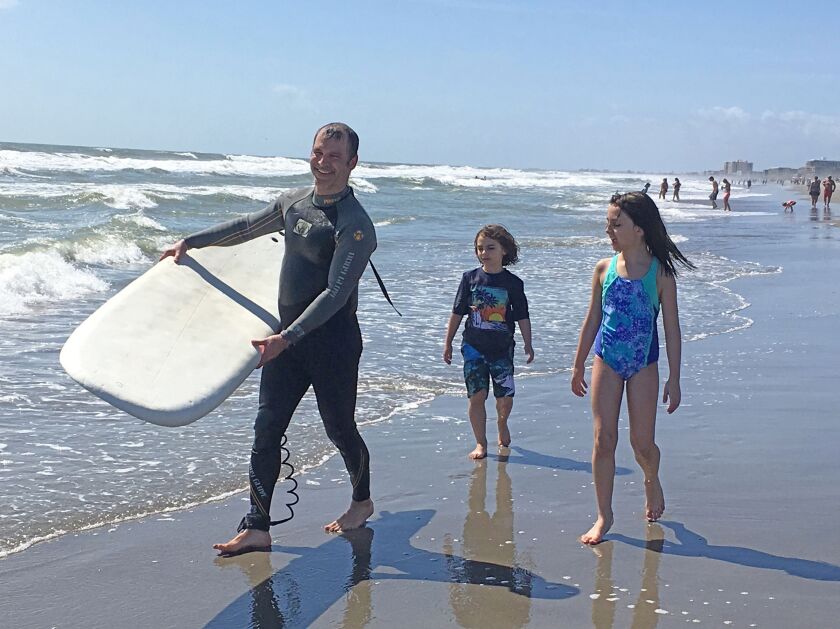Like most boys, I have an outsize interest in emergency gear. From road flares to safety goggles. It could be the most mundane thing. A fire extinguisher. A sewing kit. You name it. Certain devices practically vibrate with possibility. Even a flashlight is halfway to an adventure story: the rainy night, the dark cave, the unexpected bear.
Especially life rings. Beats there a human heart so dead as to be able to pass one of those, on a Chicago bridge, say, and not imagine the cry for help, the perfect toss to some unfortunate thrashing in the river below? The dripping rescued person. The stammered thanks. “Mister ... you saved my life!”
That’s the fantasy. The reality is more complicated.
The Chicago Park District announced it was going to start placing life rings along strategic spots on the waterfront, in the wake of the tragic drowning of Miguel Cisneros in Lake Michigan in August, less than six feet from the pier. His family felt that if there were a life ring, the 19-year-old could have been saved.
Maybe. I don’t want to dispute with a grieving family. But the views of the bereaved and public pressure do not always lead to good policy. A question arose that cuts to the heart of this: Does anyone ever get saved by life rings?
A quick check of the Sun-Times and Tribune archives found nothing, unless you count sailors plucked out of the Atlantic during World War II. Ditto for a century of the Daily News. The Red Cross deferred to the Coast Guard, which is mum. The Department of Transportation maintains 27 life rings on the Riverwalk, and 135 scattered around branches of the river. But they don’t keep track of how they’re used, other than to note that 20% vanish every year.
The Chicago Park District, despite embracing the rings, has no info. Nor does the Chicago Police Department. The Fire Department, however, says the rings save lives.
“Yes they do,” said CFD spokesman Larry Langford, who has been around. “I know they have been used from vessels and bridges.”
Of course having a ring at hand, and being able to use it to save someone, are two very different matters. I tracked down a retired fire official in Florida who had long experience with life rings.
“Within 10 or 15 feet, they’re very easy to use,” he said. “When you start throwing a life ring any distance, where most of those drownings occur, with the wind and the waves, life rings are difficult to deploy.”
Still, he’s a fan.
“A life ring is better than nothing,” he said.
Halle Quezada, co-founder of Chicago Alliance for Waterfront Safety, is an enthusiastic supporter.
“They definitely are several saves in Chicago every year,” she said. “We do see them happening.”
She also corrected one misconception about life rings. The idea is not just to fling them at a drowning person.
“Life rings also protect the rescuer,” she said. Here she touched upon an all-too familiar situation: a swimmer is in distress, someone on the shore goes in after them — and also drowns. The rings are meant to be grabbed by the person going in.
“Maybe they don’t get it to the person they’re trying to save,” Quezada said. “But they save the person compelled to get into the water, so you don’t have multiple casualties.”
She put me in touch with Matthew Lipinski, a nurse anesthetist from Logan Square, who was at a beach north of Traverse City, Michigan last month with his two daughters when he saw a rip current — he’s a certified scuba instructor. He was just warning other parents when he saw a 79-year-old woman on a pool noodle get in trouble because of the currents. As well as her daughter, trying to rescue her. And a third person attempting to help.
“There were two life rings with lines set up,” he said. “I grabbed one life ring with line, and used the rip current to get out to the 79-year-old.”
He has no doubt about the rings’ usefulness.
“Without that life ring there, there would have been a horrible outcome for probably everyone involved,” Lipinski said, noting that the only reason the rings were there was that the mother of a teen who drowned at that beach in 2012 had lobbied for them.
“Life rings are a cheap and easy way to save lives,” he said. “They’re needed along the lakeshore of Chicago. Lake Michigan is underestimated. It’s actually a very treacherous body of water, and anything that can be done to make it safer should be employed.”
It helps a lot to know what you’re doing — like Lipinski. And don’t forget the rings have a purpose, even when they’re just sitting, waiting to save somebody: they look neat, and give pedestrians something exciting to think about as they stride by, safe, on dry land.








